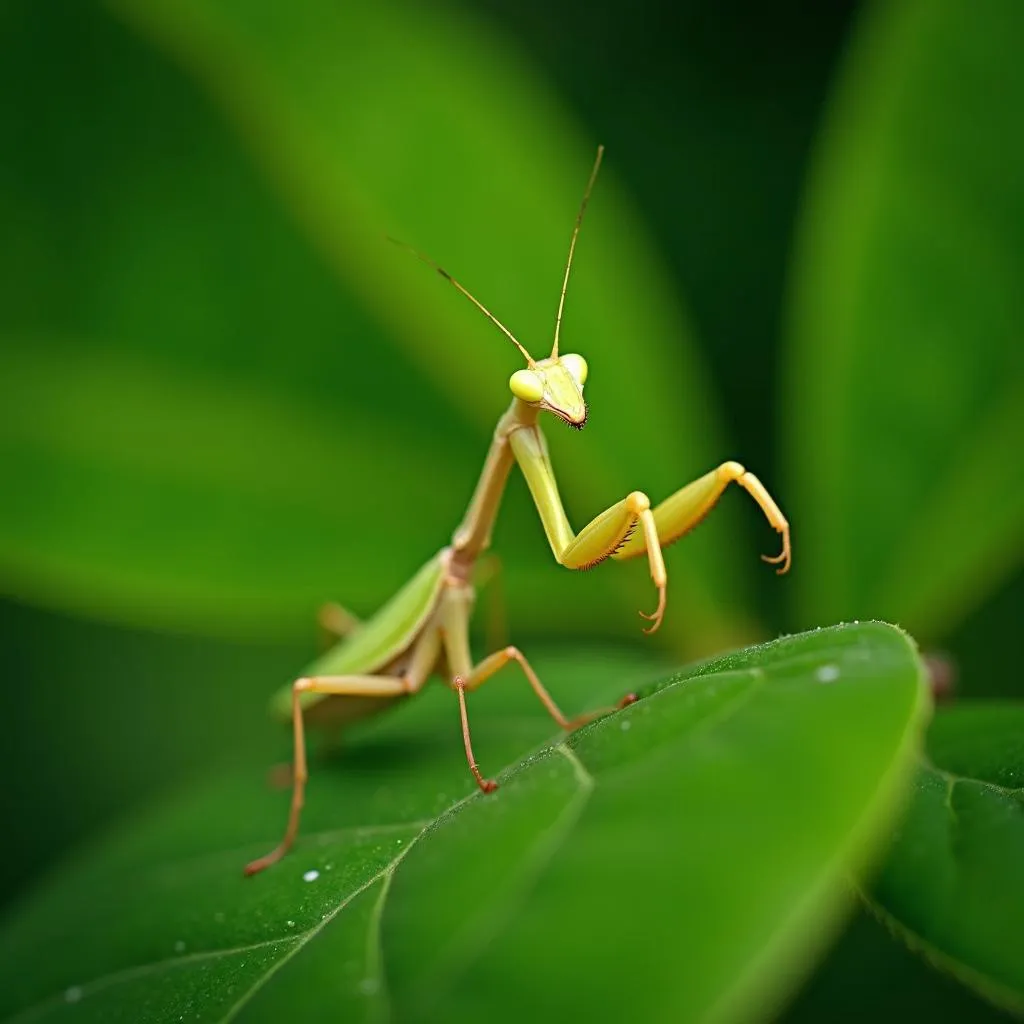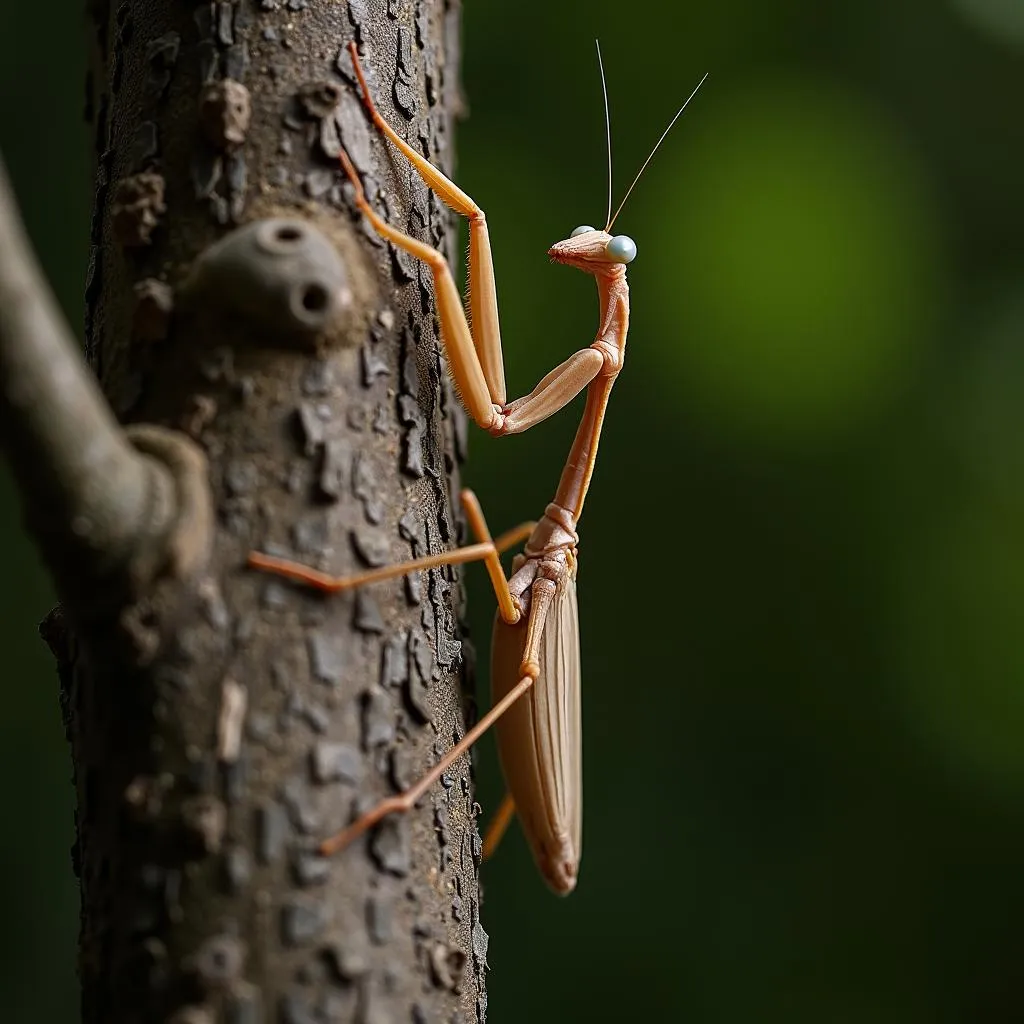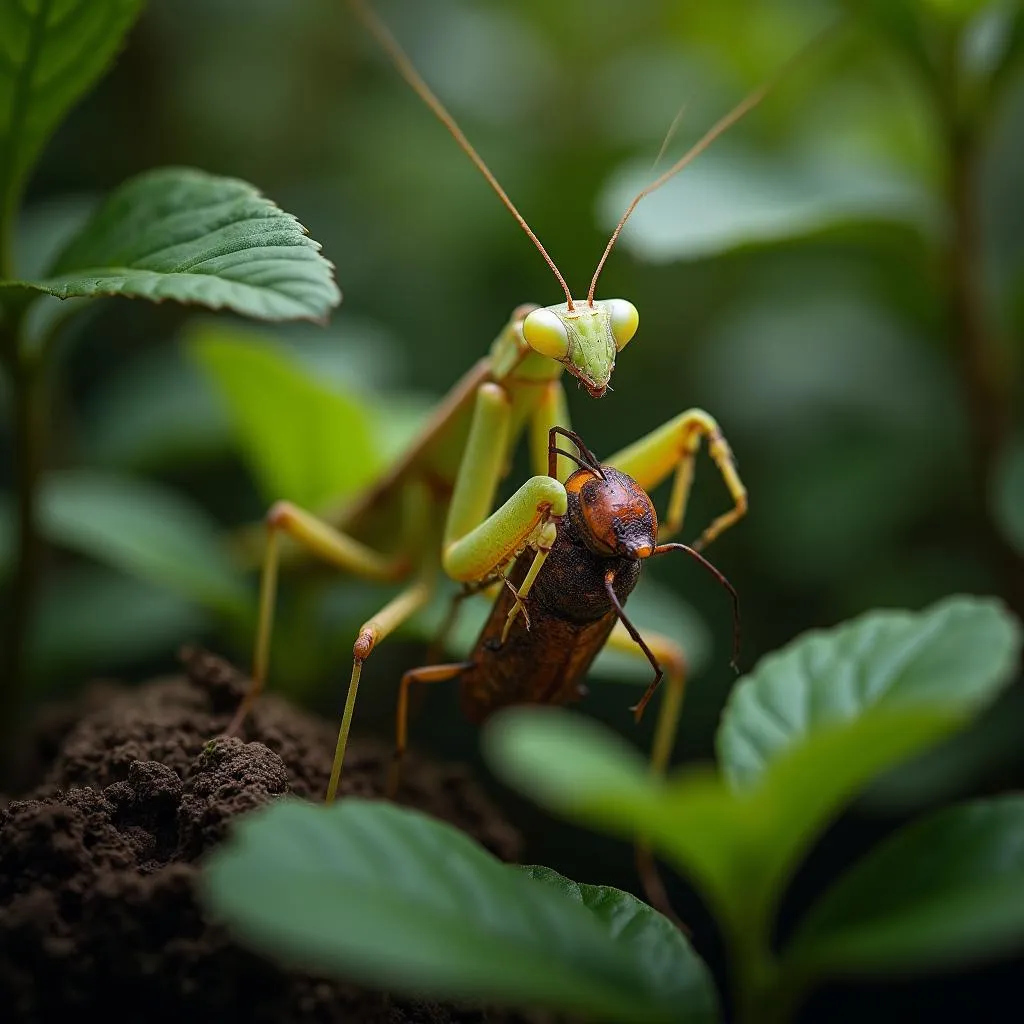Praying mantises are fascinating creatures known for their predatory skills and unique appearance. One question that often arises is whether these masters of camouflage can actually change their color. While mantises can’t change their color at will like chameleons, their ability to blend seamlessly with their surroundings is still remarkable.
Mantises utilize a form of camouflage known as crypsis, which allows them to blend in with their environment, making them practically invisible to both prey and predators. Their bodies often resemble leaves, sticks, or flowers, helping them to disappear into the background.
 Praying Mantis Camouflaged on a Green Leaf
Praying Mantis Camouflaged on a Green Leaf
While mantises can’t change their color instantly, they can adapt their coloration over time. This gradual change is influenced by several factors, including:
- Molting: As mantises grow, they shed their exoskeletons multiple times through a process called molting. During each molt, there is potential for slight variations in their coloration, influenced by environmental factors such as light, humidity, and surrounding colors.
- Diet: The food a mantis consumes can subtly impact its coloration. While not as drastic as a chameleon’s color change, some pigments from their prey may be absorbed and reflected in their exoskeleton.
- Genetics: Like all living organisms, mantises inherit their color patterns from their parents. This genetic predisposition determines their base color and patterns, providing the foundation for their camouflage.
 Brown Praying Mantis on a Tree Branch
Brown Praying Mantis on a Tree Branch
Can a Mantis Control Its Color Change?
Unlike chameleons, which possess specialized cells called chromatophores that allow for rapid color changes, mantises lack this ability. Their color adaptations are primarily passive, occurring gradually over time in response to environmental factors and biological processes.
The Evolutionary Advantage of Mantis Camouflage:
The mantis’s ability to blend in with its surroundings provides significant survival advantages. For predators like the mantis, camouflage allows them to ambush unsuspecting prey. By remaining hidden, they can patiently wait for the perfect moment to strike. Simultaneously, camouflage helps mantises avoid detection by larger predators, increasing their chances of survival.
 Praying Mantis Catching an Insect
Praying Mantis Catching an Insect
In conclusion, while mantises cannot change color on demand, their sophisticated camouflage, influenced by molting, diet, and genetics, makes them masters of disguise in the natural world. This remarkable adaptation highlights the incredible diversity and ingenuity of evolution in ensuring the survival of species.
